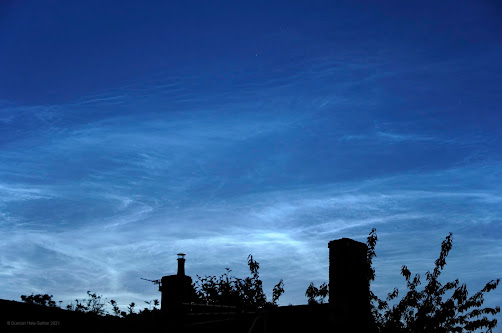I thought I would try and do something useful today and so I took a picture of the sun. One way to do this is to use a telescope to project an image onto a white screen. Here is my attempt today:-
This is just a piece of white A4 paper clipped to a book and resting on a chair. The photograph was taken with a mobile phone camera. I used a Celestron NexStar 102 SLT (102mm refractor) with a star diagonal and a 25mm eyepiece to do the projection. The picture was taken at 12:15 GMT. I was quite pleased that the image pretty much undistorted. You can see three sunspots quite clearly in the upper left quadrant of the sun.
Obviously, it is difficult to point the telescope at the sun because you must not look through the eyepiece or any finder scope. I achieved alignment by looking at the shadow that the scope casts and then, with the star diagonal and eyepiece removed, doing a rough projection onto paper. Once rough alignment had been obtained, I put the diagonal and eyepiece back and used the telescope slewing controls to improve it. I used the 'Solar System Align' functionality of the hand controller to enable the telescope to track the sun. For safety reasons, the sun doesn't appear in the list of solar system objects used for this purpose and you have to go into the 'Utilities Menu' to enable it.
I have cropped the image a bit so that you can see the solar disk more clearly:-
Here is an image captured today from the Solar Dynamics Observatory (Courtesy of NASA/SDO and the AIA, EVE, and HMI science teams):-
So you can see that the image I have taken corresponds well with the one taken by the SDO. 2976 includes the largest sunspot in this image and the spot to the left of it. 2975 is the much smaller group to the right of it. 2974 is the tiny spot on its own below left of centre.
All text and images © Duncan Hale-Sutton 2022 (except for the image from the SDO).














